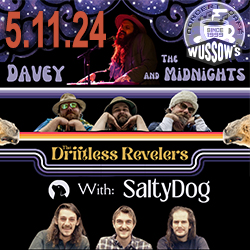Social Connection in a Time of Social Distancing

As we’re facing social distancing for the next little while, it’s looking more and more like social media will be important to many of us for remaining socially connected. As a technology ethicist focusing on social technology and interpersonal relationships, this falls under my area of research. What follows isn’t everything that could be said about relationships and social media, of course, but might be of use as we strive to maintain connection in spite of physical distance. And in case you’re interested in following this up with some of your own research, I’ve included plenty of links to further work on this subject.
First, while it might not be everyone’s first choice as a way to connect with others, reject the narrative that interactions mediated by social technologies aren’t “real.” You can really talk and share and tell jokes and play games together remotely as well as in person. Yes, some things about these interactions will be different, but context is going to color any of your interactions. And don’t think of this as just substituting for “real” interaction: comparing, say, Skype to having lunch with a friend might be frustrating, but there are things you can do in computer-mediated communication that have no in-person equivalent: playing with filters and goofy overlays, daily “roll call” with a bunch of friends all sharing pictures of their pets, Your imagination is the limit. These can be enjoyed on their own merits.
Second, not all social media use is created equal. While scrolling Facebook or Twitter for hours on end can feel anxiety-inducing, your social media engagement doesn’t need to look like this. Data on social media and psychological wellbeing shows a difference between active and passive engagement. Scrolling past others’ posts makes us feel like outsiders and invites comparisons between our lows and their publicly shared highs. But using social media to post, comment, and actually interact with each other boosts wellbeing. (See point one: it’s real interaction, and social interaction tends to be good for us.)
Third, most of us won’t actually be reciprocally engaging with all that many people on social media … and that’s okay. The anthropologist Stefana Broadbent has found that social media turns out to be more about connecting with a few intimates than befriending everyone at once … or even everyone on your contact list. Most of your interactions will likely be with between 2 and 10 others. Some, like videocalls, will skew even lower, and while many of us will have several of the same social media services in common, we’re likely to interact across platforms with few of them (although the ones we interact with across platforms are likely to be those with whom we’re closest). This is consistent with Aristotle’s point that while a few good friends are necessary for a good life, spreading ourselves thin isn’t in our best interest.
Fourth, not all of these exchanges need to be heartfelt and beautifully crafted original missives. Again, Broadbent’s work is very helpful here. There can be value just in the rituals of checking in at key points in the day: while we’re getting started, when we’re transitioning between work and home, at mealtimes, etc. Rituals get a bad rap sometimes, but as Confucius argued, they’re also helpful in giving shape to our relationships and facilitating regular practices of coming together.
Fifth, it’s okay not to interact with people whose social media presence puts you on edge. Look, people can be perfectly lovely and yet not cut out to be your particular best friend, and people can be more compatible in some contexts than others. If social media use is frustrating for you, it can be helpful to stop and reflect on whether some people in particular are a poor match for your social needs in this context. Use those block, hide, and even temporary “take a break” options to make sure your social interactions are fulfilling. You’ll be a better friend, including to those you take a break from, if you’re not on edge from incompatible social media use styles. Taking a cue from Hume’s account of virtue ethics, we are capable of being better in contexts that make it easier to act well. Online interactions give us a great deal of control over when and how we interact, so we can set ourselves up for rewarding rather than frustrating interactions with those we care about … even if that means taking a breather occasionally.
Sixth, be mindful of context collapse. When we’re all connected on the same handful of platforms, especially those that default to broadcasting to everyone on our contact lists, it’s easy to be all up in each other’s business. But not every post is directed at everyone equally. This one can be super tricky to navigate, especially because evolving norms on social media can make the etiquette of joining in vs. sitting out conversations a bit opaque, especially to less-active or newer users. But Danah Boyd’s work on teens’ use of online spaces reveals that teens and young adults can find it frustrating when older family members insert themselves into contexts where they’re out of place (if you’re unsure what that means, here’s a clue: if your first comment is to ask for an explanation because what they’re doing doesn’t look familiar or make sense, that might not be aimed at you — this was one of the top complaints). Folks who use platforms regularly start to develop a sense of when an interjection would be appropriate, and when to stay out, just like norms around public interactions can vary by community and context face-to-face. But if you’ve been away for a while, remember that just because we’re interacting in public spaces and we like each other doesn’t mean you need to be part of every exchange. If you’re not sure whether you’re welcome in an existing exchange, especially with younger family, you can always start your own conversation by sharing something about your own life!
Which brings us to my seventh point … not every exchange needs to be beautifully crafted, but sharing your own life is going to be better for connection than a constant stream of others’ links and memes. Anything from a goofy selfie, to a quick video clip, to a pet picture, to a silly emoji can help us build social connections and share lives. This reference is going to date me to a very specific demographic, but you don’t want to come across like the guys in High Fidelity who could only interact by listing albums they liked at each other. You are more than your taste and your browsing habits, and just like others might be exhausted by constant sharing of things you read, listened to or watched in person, the same can be true online. Now, when our face-to-face interactions constitute the bulk of our interactions, social media can be helpful as a way to share just the stuff that’s harder to exchange in person. But when we’re relying on these channels for the bulk of our social interactions, making a good proportion of them personal is going to help.
And that leads to my eighth point … manners matter! Some folks are tempted to dismiss etiquette as artificial; others to act as though online etiquette is either mysterious or non-existent (think comments along the lines of “it’s the wild west!”). But lots of artificial things are very useful indeed, and etiquette and manners both online and off are very real, even if socially constructed. Ask yourself, “is this something I’d say or do face to face? Is it something I’d want done to me?” Use that as your guide. Be kind, be generous, be respectful. Avoid unsolicited advice and uninvited criticism. Give people graceful outs. Not everything needs to be said, or said publicly. It’s easy to think we can let manners slide amongst our nearest and dearest, but really, who better to demonstrate our respect and consideration, especially when we’re all under stress? Xunzi makes some excellent points about the importance of manners to blunt our natural inclinations to act in ways that disgust and irritate our fellows. We all need to think well of each other, especially in times of stress and distress. This does not mean you ought to start policing others’ manners — that’s rude. Just focus on your own behavior, and remember you can (politely!) disengage and mute folks with whom polite conversation isn’t possible (see points five and six). (This is not the same thing as saying you must tolerate mistreatment or let wrongdoing slide “to be polite” or “keep the peace.”)
Of course, like a good Aristotelian, I think there’s a middle ground to occupy here at point nine. Excessive focus on positivity and only sharing the highlights can be tempting, especially when we don’t want to bring each other down or stress each other out, but that can also make people who are struggling feel like they’re the odd ones out and invite unhealthy comparisons. Vulnerability can be valuable. This doesn’t mean sharing your most intimate information with audiences who haven’t earned your trust, but a bit of sharing your daily struggles and frustrations can also help us feel genuinely connected and not just like we’re performing or putting on a show. And be gentle with folks who are struggling — yourself and others too.
Speaking of struggles, that brings me to my last and tenth point. Misinformation spread is a real concern on social media networks, and we can’t blame it all on the bots … human beings love to share a good juicy story, and because of this falsehoods spread on social media even faster than the truth. In a pandemic, where information is imperfect and the situation constantly changing, it’s easy to fall into the trap of passing along the most outrageous or provocative stuff you can find. But good information is already being aggressively pushed by a number of health agencies, and even well-intentioned misinformation can do a lot of damage. Try to keep down your resharing of questionable info (especially memes and screenshots that are easy to doctor and difficult to source). A number of people are already sharing helpful pieces about combatting misinformation among the elderly, who seem both especially vulnerable to misinformation generally, and are at special risk during the COVID-19 pandemic. And if I had the cure for conspiracy theories I would share it with you, but I don’t. But I do think the evidence points to the idea that arguing online is unlikely to do the job — especially when people are in the grips of a counter-narrative, turning up in their timelines with facts and figures and carefully numbered premises is likely to lead them to double down rather than change hearts and minds. Where we stand a chance of helping, it is likely to be rooted in interpersonal trust rather than logical argument, much as it hurts this philosopher to say it. Do call out falsehoods when you can, and report misinformation, but don’t wear yourself out and sour what trust and goodwill already exists trying to argue away mistaken beliefs on social media.
This isn’t a perfect recipe for success or intended to be a one-size-fits-all solution, but does come out of a line of research about how social media can play a role in friendship and other valuable interpersonal relationships. I hope this is helpful in sustaining valuable social connection at a time when we can’t rely on face-to-face interactions. And in providing you with some reading and viewing options for when you’ve had enough social connecting for one day.
Alexis Elder is an assistant professor of philosophy at the University of Minnesota Duluth, working in ethics, social philosophy, metaphysics, philosophy of technology and moral psychology.
Recommended Links:
Leave a Comment
Only registered members can post a comment , Login / Register Here















No Comments